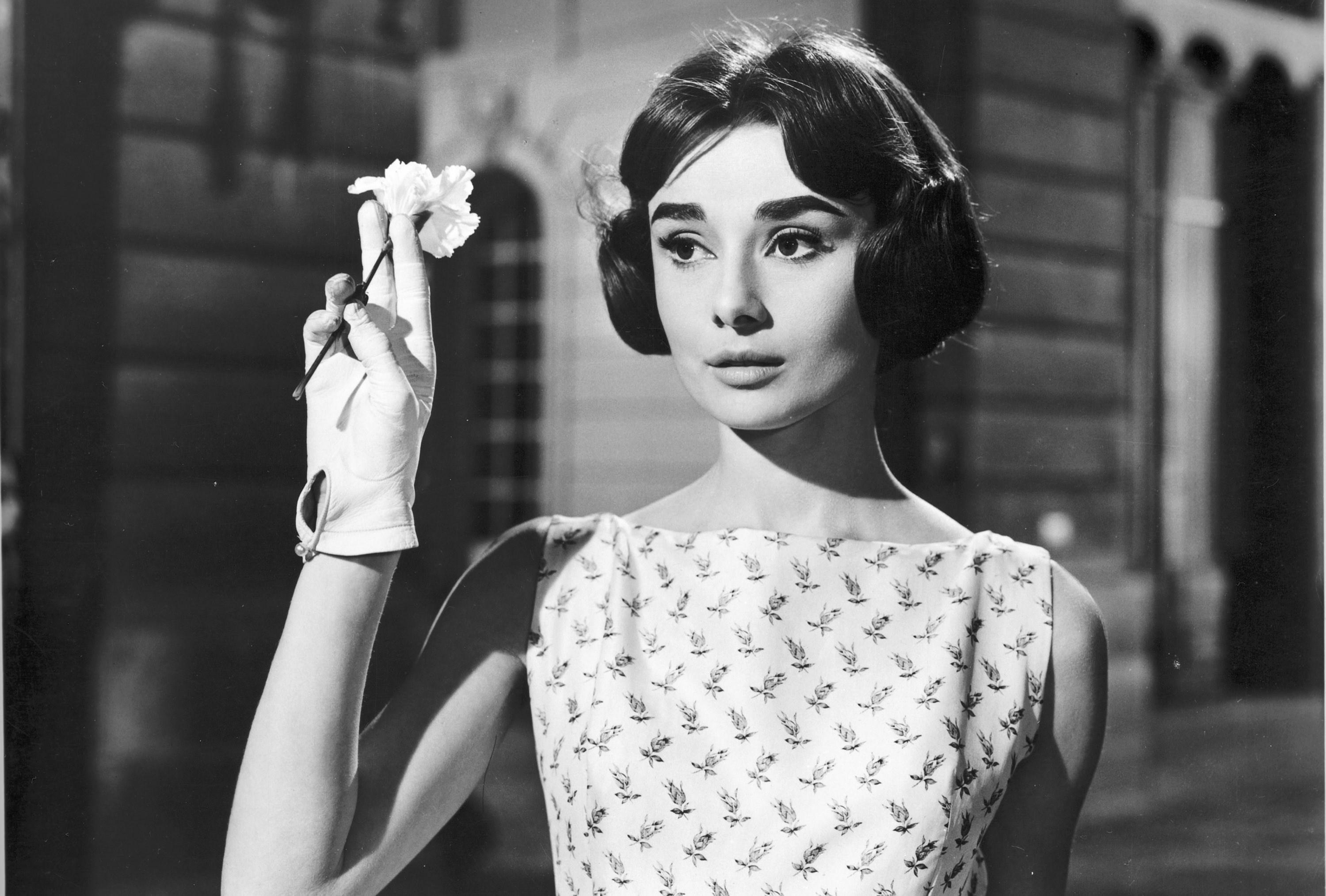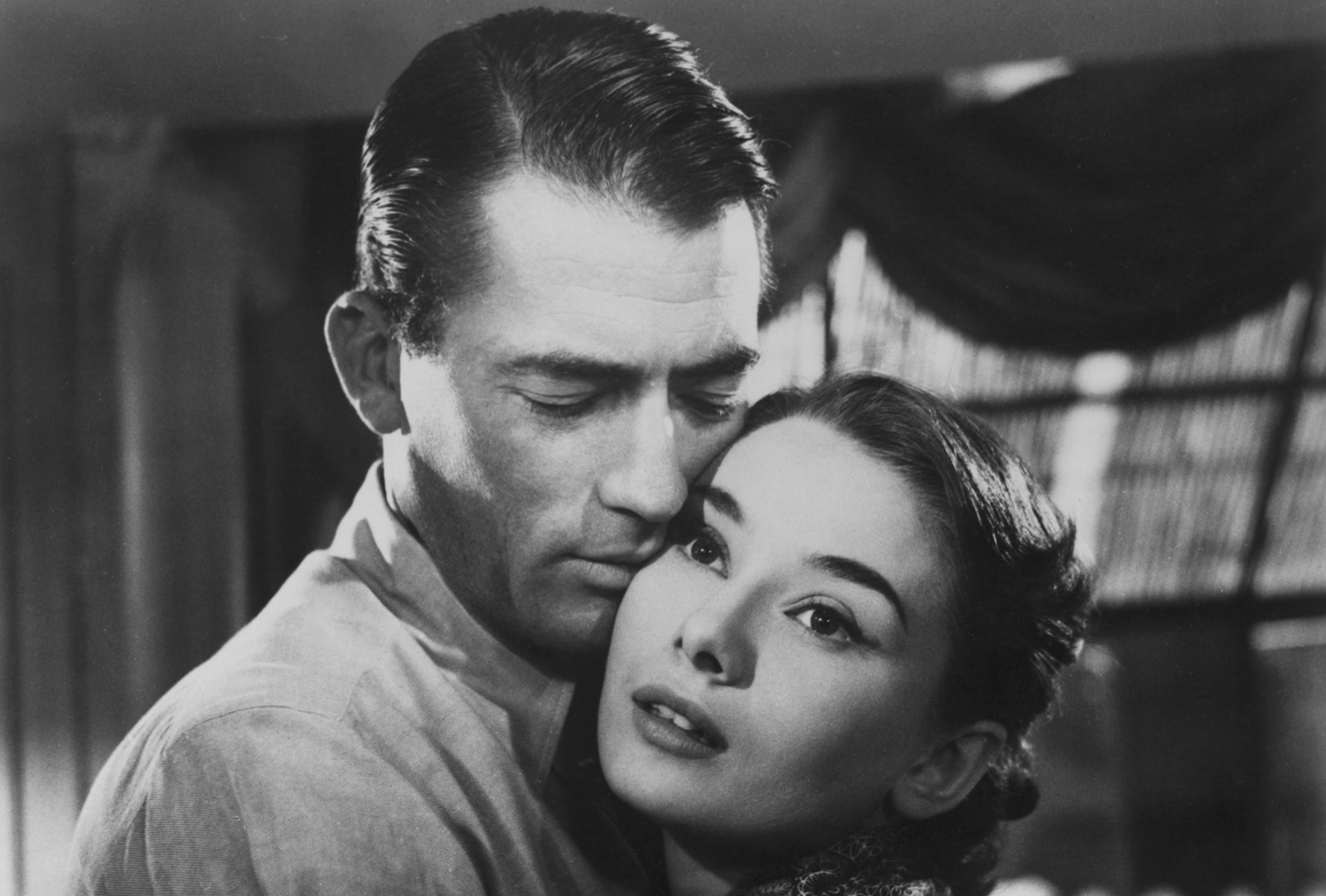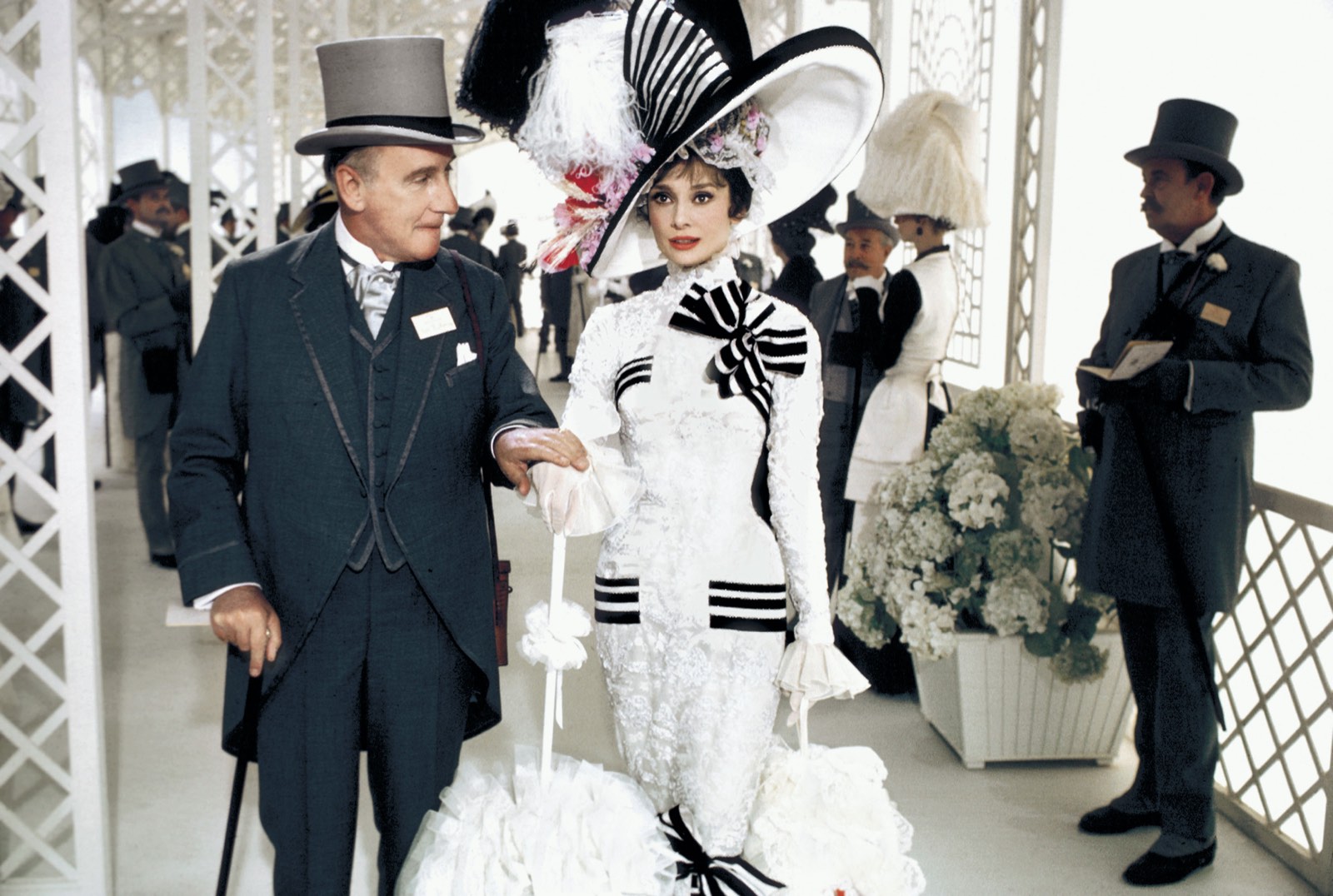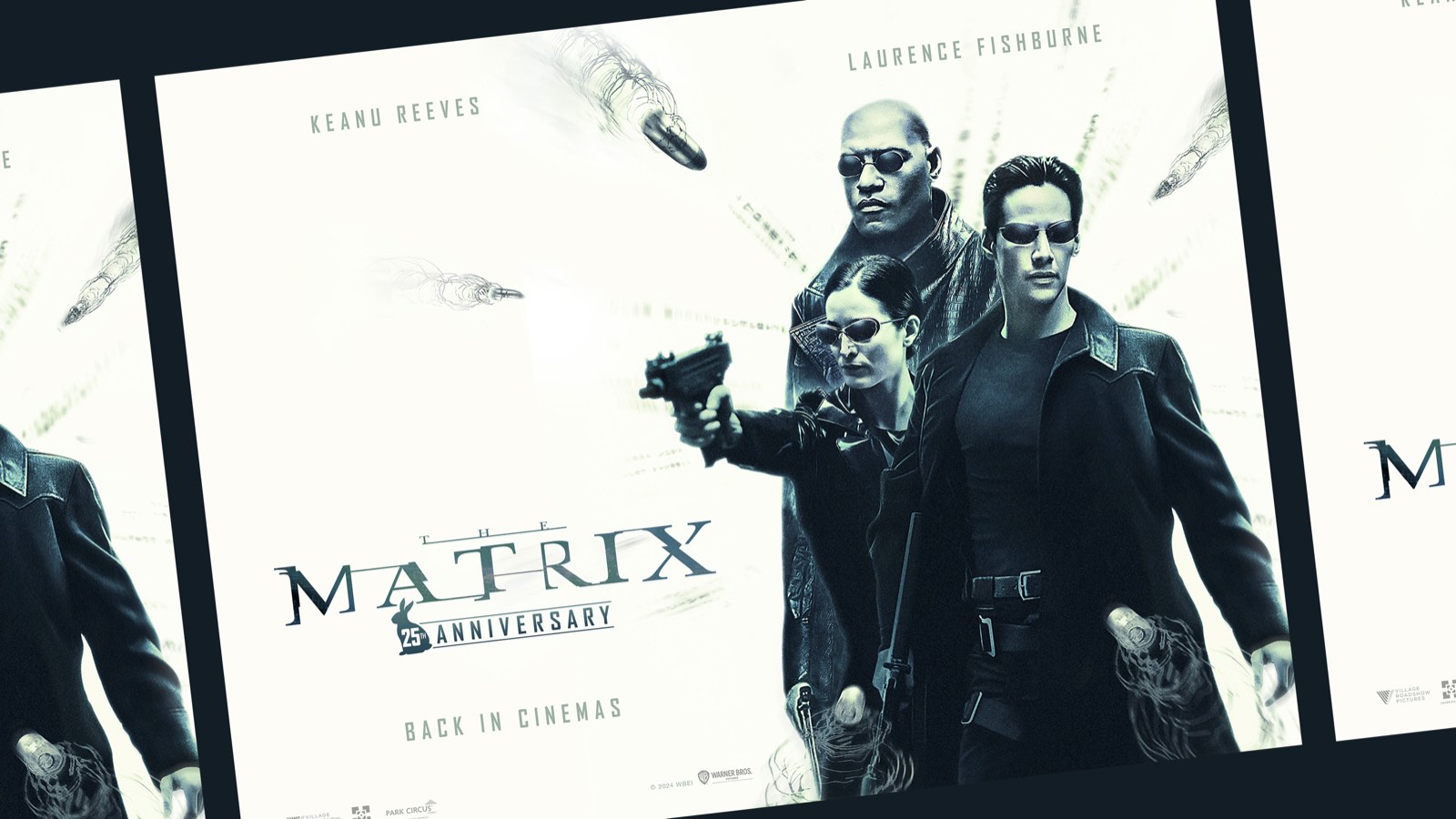

Valentine’s Day is a date to remember in cinema, and in 2022 we’re again marking the occasion with some all-time classics that never fail to impress. One icon of romantic cinema is, of course, Audrey Hepburn, and in the next in our Close Up series - in which we dive deep into our catalogue to see what iconic films and stars mean to us, and why - we've asked author and academic Peter Kramer to tell us just why Audrey remains such an icon.
Peter Kramer is a Senior Research Fellow in Cinema & TV in the Leicester Media School at De Montfort University, UK. His published books include two in the BFI Classics series (Dr. Strangelove or: How I Learned to Stop Worrying and Love the Bomb, 2014, and The General, 2016), as well as The Hollywood Renaissance: Revisiting American Cinema's Most Celebrated Era (co-edited with Yannis Tzioumakis, Bloomsbury, 2018).
Peter says: In this article I want to get a bit personal, but scholarly in other places, about Audrey Hepburn – the great beauty, ultimate style icon, beloved actress, and much-admired humanitarian.
Born in Belgium in 1929 to a British father and a Dutch mother and growing up in Belgium, the UK, and the Netherlands, Audrey Hepburn trained as a ballet dancer and, from the late 1940s to the early 1990s, appeared on stage, television, and in movies made (and shown) all around the globe. Her films were rarely set in the United States, European locations being much more common (in addition, long sequences or whole films took place in the Congo or the Venezuelan rainforest). Even the films that were (mainly) set in the US tended to include episodes set abroad and, in any case, Hepburn’s US-based character was often a foreigner. Even when she played an American, all or much of the action often took place in other countries. Finally, having lived in various European countries throughout her life, Hepburn travelled the world – especially Africa – in support of humanitarian causes. In every respect, she was – and continues to be – a truly international star.
In the following, I want to share some sources for audiences to get to know her work and life better (with references and links provided in the endnotes(1). Most importantly, I want to whet reader appetites for the Audrey Hepburn films Park Circus is bringing back into cinemas.
I am writing this ahead of the 29th anniversary of Hepburn’s death on 20th January 1993. I remember twenty-nine years ago I was unexpectedly yet strongly moved by the news of her passing, not least because it seemed so premature, Hepburn being only 63 years old. I had been studying and teaching film for about a decade, first in Germany and then in the UK, but the films I watched, researched, and taught during this time did not include a single Hepburn movie – with one rather magical exception.
I had gone to the cinema to see Steven Spielberg’s Always soon after its UK release in March 1990, and in the middle of this ghostly love and renunciation story, suddenly there on the big screen appeared an angel, played by Audrey Hepburn(2). Her brief appearance in Always triggered memories of films I had seen on television during my childhood and youth in the 1960s and 1970s, but nothing more happened then.
However, when news of her death reached me in early 1993, I felt an urgent need to see and learn more. For various reasons, my other academic research – which up to this point had been focused on the silent period – was on hold, allowing me to obsess about Audrey. I watched the films that were being shown on television to commemorate her life and work. They included her Hollywood debut Roman Holiday (1953), a romantic comedy about a rogue European princess and an American journalist which I found utterly enchanting, and Audrey Hepburn Remembered (1993)(3), an informative and moving documentary that, among many other things, covered her wartime experiences in the Netherlands and also her work as a UNICEF Goodwill Ambassador in the last years of her life.

Roman Holiday (1953) - Image courtesy of Paramount
I was surprised to find out that at the time of her death, hardly any books about Hepburn were in print, and very little work about her had been published by film scholars in English or German. It did not take me long to read the existing Hepburn literature across 1993 and 1994, and in searching for more material I began to explore - in a rather haphazard fashion - relevant documents, collections, and press clippings in British, American, Dutch, and German archives.
This being the mid-1990s, it was not easy to get hold of most of Hepburn’s films(4). While several could be bought on video and others recorded from British and German television, I also spent time in the National Film Archive in London watching Young Wives’ Tale (1951), one of her early British films in which she had a minor role before she co-starred – somewhat prophetically playing a film star – in the French-language and English-language versions of Nous irons a Monte Carlo/Monte Carlo Baby (1951/52) and in Secret People (1952), after which she shot to stardom with Roman Holiday. I also visited two Dutch archives where I watched the Dutch and international English-language versions of Hepburn’s first ever film, Nederlands in Zeven Lessen/Dutch at the Double (1948) (5).
I also began work on papers on Hepburn for research seminars at universities and academic conferences, and later published a few chapters in edited collections(6). But eventually, other scholarly interests reasserted themselves and I largely left my research on Hepburn behind, although I did try (somewhat unsuccessfully) to keep up with the considerable growth in academic and non-academic publications on Audrey(7). With Park Circus bringing some of her best films back to the big screen, now is a good time to consider her work, life, and legacy once more.

Robin and Marian (1976) - Image courtesy of Sony
One of the All-Time Greats
As a movie star, Hepburn is most closely associated with sixteen Hollywood movies she made between 1953 and 1967, although she appeared in quite a few other projects (including TV productions) before and after this period, most notably Robin and Marian (1976) and They All Laughed (1981). Her's is a relatively small cinematic oeuvre, but her performances in these sixteen films earned her recognition as one of the greatest movie stars of all time.
This recognition built up from the outset of her Hollywood career. She was nominated for the Best Actress Oscar® for her first two American films, Roman Holiday and Sabrina (1954), winning for the former. She also won the Best Actress BAFTA, and Best Actress from the New York Film Critics Circle(8). Hepburn was further nominated for three more Best Actress Oscars® and for three more BAFTAs, winning for The Nun’s Story (1959) and Charade (1963), as well as four more New York Film Critics Circle awards, winning for The Nun’s Story. Astonishingly, she received nine Golden Globe Best Actress nominations – four in the drama category, five in the “musical or comedy” category – winning for Roman Holiday. Once again rather prophetically, the HFPA also declared her to be the “World Film Favorite – Female” in 1955.
In two Los Angeles Times surveys from January 1970, readers and filmmakers both declared Hepburn’s work in the 1960s to be surpassed by very few actresses. In the category “Best Dramatic Female Performance”, she was at number three in the readers survey with Wait Until Dark (1967), and at number two in the filmmakers survey with both Wait Until Dark and Two for the Road (1967), while she also made it to number two in the readers survey in the category “Best Female Comedy Performance” for Breakfast at Tiffany’s (1961)(9).
In 1999, the American Film Institute aimed to identify the “Greatest American Screen Legends” and placed Hepburn in third place on the women’s list(10). A survey carried out by sofy.tv in 2017 ranked Hepburn at number three of the “Best 10 Hollywood Actresses of All Time”. According to the crowd-ranking website Ranker, in May 2021 Hepburn was seventh on the list of “The Best Actresses in Film History”(12). Finally, a survey carried out by YouGovAmerica at the end of 2021 ranked Hepburn fourth among “The Most Popular All-Time Actresses”(13).
Rather than being based solely on talent and performances, there are some indications that the main reason for Hepburn being perceived as really standing out from her peers was her other-worldly yet natural beauty. Thus, an audience poll carried out in recent years by Heart Radio and the skincare company Amway in the UK identified Hepburn as “The Most Beautiful Woman of ALL Time”(14). This was also the result of a 2006 poll reported in the London Evening Standard, and of a survey of beauty, fashion, and photography professionals, concerning the “Most Naturally Beautiful Women” in 2004(15).
Now, one might argue that Hepburn’s status as the greatest beauty of them all has as much to do with her ubiquitous and widely referenced photographs as with her films. Perhaps the photographs are even more important, but then again, many of them are closely associated with her films, especially Breakfast at Tifffany’s(16). So, let’s take a closer look at her film career.

2014 reissue quad for Funny Face
Many Hits and Few Misses
Roman Holiday was Audrey Hepburn’s first Hollywood production, and the first film in which she took a lead role. Starting with Roman Holiday, she worked primarily with Hollywood’s leading directors (such as William Wyler, Billy Wilder, King Vidor, Stanley Donen, Fred Zinneman, John Huston, Blake Edwards, and George Cukor, as well as the much younger Richard Lester and Peter Bogdanovich in two of her comeback films) and its biggest male stars, including Gregory Peck, Humphrey Bogart, William Holden, Henry Fonda, Fred Astaire, Gary Cooper, Burt Lancaster, Cary Grant, and Sean Connery.
Ten of her sixteen films from 1953 to 1967 were substantial hits at the American box office, ranking among the top 30 films in their year of release, with How to Steal a Million, at number 28 in the chart for 1966(17). Six of Hepburn’s films were among the top 20, the highest ranked being War and Peace (at number seven in 1956), Charade (at number eight in 1963) and My Fair Lady (at number two in 1964). The latter was among the highest grossing films of all time up to this point at the US box office.
It is somewhat difficult to understand why neither of Hepburn’s two releases in 1957 – Love in the Afternoon and Funny Face – did particularly well at the box office, nor The Children’s Hour (1961). The very playful Paris When It Sizzles (1964) fared similarly. The poor commercial performance of Green Mansions (1959), in which Hepburn plays a girl raised in the jungle, and The Unforgiven (1960), which features Hepburn in the role of a rancher family’s adopted daughter who turns out to be Kiowa by birth, is perhaps not so surprising (although these are certainly very intriguing films).
By contrast, many of Hepburn’s films of the period between 1953 and 1967 were showered with Oscar® nominations: eleven of the sixteen received at least one, and several of these received many (eight in the case of The Nun’s Story(18). These nominations resulted in many wins. Roman Holiday won three (Best Actress, Best Story, and Best Costume Design) from ten nominations. Sabrina had one win (Costume Design) from six nominations. Breakfast at Tiffany’s won two (Music Score and Original Song) from five nominations. Last but not least, My Fair Lady was one of the all-time best performers at the Academy Awards® with eight wins (including Best Picture and Best Director) from twelve nominations.

My Fair Lady (1964) - Image courtesy of Paramount
Many of Hepburn’s films from this period also did well at the BAFTA, Golden Globe, Directors Guild of America, Writers Guild of America, National Board of Review and New York Film Critics Circle Awards, while also often featuring in the annual ten best films lists of the New York Times and Time magazine. The Nun’s Story was nominated for Outstanding Directorial Achievement by the Directors Guild of America and for Best Written American Drama by the Writers Guild of America and had one win (the Special Achievement Award) from six nominations at the Golden Globes. The New York Film Critics Circle gave the film awards for Best Actress and Best Director, while the National Board of Review gave it awards for Best Film, Best Director and Best Supporting Actress. The New York Times declared it to be the third best American film of the year.
Several of her films from this period have established themselves as true classics and all-time favourites. Los Angles Times in the 1970s readers voted My Fair Lady the seventh best film of the 1960s. This film was also ranked twenty-seventh in a 1975 survey of American film and television executives asking them about their favourite movies of all time(19). So far four of Hepburn’s films have been inducted into the Library of Congress’s National Film Registry which is designed to preserve American film heritage: Roman Holiday (inducted in 1999), Sabrina (2002), Breakfast at Tiffany’s (2012) and My Fair Lady (2018)(20).
In 1998 the American Film Institute surveyed filmmakers and other industry personnel to determine the best American movies of all time, with My Fair Lady ranking 91st. Later AFI surveys concerning specific genres ranked My Fair Lady eighth among musicals, and Hepburn’s rendition of “Moon River” fourth in the list of the best movie songs of all time. Wait Until Dark came in at number 55 among thrillers. But it was the “100 Passions” list which served to highlight what is perhaps the key component of Hepburn’s oeuvre – its focus on romantic love: Breakfast at Tiffany’s was at number 61, Two for the Road at number 57, Sabrina at number 54, My Fair Lady at number 12 and Roman Holiday at number 4.
While not all of Hepburn’s films revolve around romance, most do, and they do so in a surprising variety of ways. Romantic feelings may only be hinted at (The Nun’s Story), and even when fully expressed they may have to be renounced in the end (Roman Holiday). Hepburn’s character may be the object of affections for another woman (The Children’s Hour), or she may fall for the wrong man and only belatedly choose the right one (Sabrina); both the wrong men and the right ones often are liars, womanisers, drunkards, and decades older than she is. Hepburn’s character may have to deal with what the ravages of time can do to love (Two for the Road). She may be very reluctant to commit to a relationship in the first place (Breakfast at Tiffany’s) or, more usually, find the object of her affections to be noncommittal (Love in the Afternoon). One or both lovers may even die.
Despite the general perception of Hepburn as ethereal, angelic, and virginal, there is a lot of talk about sex and there are many erotically charged scenes in her films – all in reasonably good taste and/or played for laughs – even in those from the 1950s and early 1960s (I would insist, though, that despite often being characterised as a call girl, Holly Golightly really is, as she says, being paid for her company). It’s not just male characters who take – and talk about – many lovers: Hepburn’s characters may well do the same, as happens to great comical effect in Love in the Afternoon and Paris When It Sizzles, whereby these lovers are only imaginary in the former, and possibly real in the latter.
More importantly, though, there are many deadly serious moments in Hepburn’s films, including the most lightweight comedies – joy, passion, longing, sadness, fear, despair – bursting forth in her performance. They remind us that this seemingly otherworldly beauty fully participates in life as we know it. She may not appear to be of our world, but she most certainly is in our world.
End Notes
1 - However as so often, Wikipedia is probably the best starting point: https://en.wikipedia.org/wiki/Audrey_Hepburn. There are also a number of in places quite informative and in any case very intriguing fan websites, including https://rareaudreyhepburn.com/, https://www.everythingaudrey.com and https://www.fanpop.com/clubs/audrey-hepburn.
2 - For more on this, see Peter Krämer, “Remembering and Researching Audrey Hepburn: Always and Beyond”, Women’s Film and Television History Network (UK/Ireland) Blog, 28 March 2014, http://womensfilmandtelevisionhistory.wordpress.com/2014/03/28/remembering-and-researching-audrey-hepburn-always-and-beyond/
3 - See https://www.youtube.com/watch?v=sUD13Yh7LfM. For a list of documentaries, feature films and TV programmes about Hepburn, some of which are in turn accessible on YouTube, see https://www.imdb.com/find?s=tt&q=audrey+hepburn&ref_=nv_sr_sm.
4 - For a listing of all of Hepburn’s films, see https://www.imdb.com/name/nm0000030/?ref_=fn_al_nm_1; a less comprehensive but more readable filmography can be found at https://en.wikipedia.org/wiki/Audrey_Hepburn_on_screen_and_stage. Searching for the more obscure film titles on YouTube, or doing a video search on Google, in many cases leads to clips featuring Hepburn’s scenes. Searching for “Audrey Hepburn screen tests” on Google or on YouTube also leads to intriguing clips from the early 1950s. Of course, many documentaries on Hepburn include rarely seen film material as well.
5 - The Dutch version can be watched, with a very brief introduction in Dutch, at https://www.youtube.com/watch?v=iFMyBcHeHwY (it is possible to switch on – badly translated – English subtitles on this video). I have examined Hepburn’s early career in some detail in Peter Krämer, “The Making of an International Star: The Early Film Career and Star Image of Audrey Hepburn, 1948-1954”, Fan Phenomena: Audrey Hepburn, ed. Jacqui Miller, Exeter: Intellect, 2014, pp. 68-75.
6 - See the earlier footnotes and also Peter Krämer, “‘Faith in Relations Between People’: Audrey Hepburn, Roman Holiday and European Integration”, 100 Years of European Cinema: Entertainment or Ideology?, ed. Diana Holmes and Alison Smith, Manchester: Manchester University Press, 2000, pp. 195-206; “‘A cutie with more than beauty’: Audrey Hepburn, the Hollywood Musical and Funny Face”, Musicals: Hollywood and Beyond, ed. Bill Marshall and Robynn Stilwell, Exeter: Intellect, 2000, pp. 62-9; and “The Many Faces of Holly Golightly: Truman Capote, Breakfast at Tiffany’s and Hollywood”, Film Studies, no. 5 (Winter 2004), pp. 58-65.
7 - A long list of books about Hepburn can be found with the help of Google Books; see https://www.google.com/search?q=audrey+hepburn&tbm=bks&ei=V5nlYaOeIY2A8gKC176IBQ&start=0&sa=N&ved=2ahUKEwjjpcC4mrn1AhUNgFwKHYKrD1E4ChDy0wN6BAgBED8&biw=1036&bih=520&dpr=1.5. Both books and academic essays can be found through Google Scholar; see https://scholar.google.com/scholar?start=0&q=audrey+hepburn&hl=en&as_sdt=0,5.
8 - This paragraph, and also the next one, is based on https://en.wikipedia.org/wiki/List_of_awards_and_honours_received_by_Audrey_Hepburn.
9 - Cobbett Steinberg, Film Facts, New York: Facts on Files, 1980, pp. 146-7.
10 - See https://www.afi.com/afis-100-years-100-stars/.
11 - See https://sofy.tv/blog/10-best-hollywood-actresses-time/.
12 - See https://www.ranker.com/crowdranked-list/the-best-actresses-in-film-history.
13 - See https://today.yougov.com/ratings/entertainment/popularity/all-time-actresses/all.
14 - See https://www.heart.co.uk/showbiz/top-10-most-beautiful-iconic-women-of-all-time/audrey-hepburn/.
15 - See https://www.standard.co.uk/showbiz/the-100-most-beautiful-women-of-all-time-7245975.html# and http://news.bbc.co.uk/1/hi/uk/3763887.stm. Of course, Hepburn has not topped all such surveys, but she almost always comes close to the top.
16 - For collections of Hepburn photographs, see for example https://www.gettyimages.co.uk/photos/audrey-hepburn and https://fineartamerica.com/art/photographs/audrey+hepburn.
17 - Based on unpublished annual charts compiled by Sheldon Hall on the basis of an alphabetical listing of all films with US film rentals of $3 million or more in Lawrence Cohn, “All-Time Film Rental Champs”, Variety, 10 May 1993, pp. C76-108.
18 - See the Wikipedia entries for individual films. Also cp. Steinberg, Film Facts.
19 - Steinberg, Film Facts, p. 186.
20 - See https://www.loc.gov/programs/national-film-preservation-board/film-registry/complete-national-film-registry-listing/
21 - See https://en.wikipedia.org/wiki/AFI%27s_100_Years...100_Movies.




